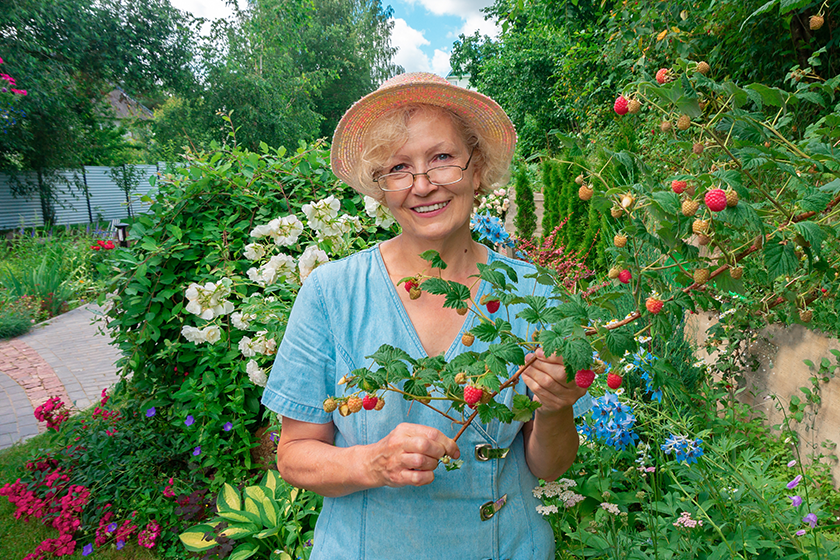Memory Care isn’t just about managing symptoms; it’s also about enhancing the quality of life for your loved ones. One effective way to achieve this is by designing a sensory garden specifically tailored for individuals with Alzheimer’s or other forms of dementia.
Sensory gardens provide a safe, calming environment that stimulates the senses, encourages physical activity, and fosters emotional well-being. Let’s explore how to create an Alzheimer’s sensory garden in Memory Care that caters to the unique needs of residents.
Understanding the Benefits of Sensory Gardens
Sensory gardens are designed to engage the senses—sight, smell, touch, hearing, and even taste—through carefully selected plants, textures, sounds, and features. For residents in Memory Care communities, these gardens offer a therapeutic space where they can connect with nature, reduce anxiety, and experience moments of joy and tranquility.
Spending time in nature can lower levels of agitation and depression in people with dementia, making sensory gardens a valuable addition to any Memory Care environment.
Selecting the Right Plants for the Garden
Choosing the right plants is essential in creating an effective sensory garden. Consider plants that are safe to touch and smell, such as lavender, rosemary, and mint, which are known for their calming scents and soft textures. Brightly colored flowers like marigolds and sunflowers can attract attention and provide visual stimulation.
It’s also important to include non-toxic plants, as individuals with cognitive impairments may occasionally pick or even taste them. The goal is to create a space filled with safe, engaging elements that stimulate the senses without overwhelming them.
Incorporating Tactile Elements for Engagement
Tactile stimulation is a vital part of a sensory garden, especially for residents in Memory Care. Incorporating elements that can be touched, such as smooth stones, textured bark, or water features, can provide comforting tactile experiences.
Raised flower beds or containers with a variety of textures allow for easy access and encourage residents to engage with the garden. The feel of soil, leaves, and petals can evoke positive memories and provide a sense of connection to the environment.
Using Sound to Enhance the Experience
Sound can play a significant role in a sensory garden, providing a calming effect and helping to ground individuals in their surroundings.
Consider adding wind chimes, bird feeders, or small water features like fountains or trickling streams to create soothing, natural sounds. The sound of rustling leaves or flowing water can be particularly comforting for those with Alzheimer’s, helping to reduce agitation and create a peaceful atmosphere.
Designing for Safety and Accessibility
Safety is paramount when designing a sensory garden for Memory Care. Paths should be wide, flat, and easy to navigate, ideally with non-slip surfaces to prevent falls. Avoid plants with thorns or sharp edges, and ensure that there are shaded areas to protect from excessive sun exposure.
Seating areas should be strategically placed throughout the garden, allowing for rest and relaxation. The overall layout should encourage exploration while providing clear, unobstructed views to reduce confusion and anxiety.
Creating Opportunities for Social Interaction
A well-designed sensory garden not only provides a space for individual reflection but also encourages social interaction. Seating areas arranged in small groups or benches placed along pathways invite conversation and companionship.
Group gardening activities, such as planting flowers or watering plants, can foster a sense of community and purpose. These shared experiences can be particularly meaningful for residents in Memory Care, helping to combat feelings of isolation and promote social engagement.
Personalizing the Garden for Emotional Connections
Personalization can enhance the emotional impact of a sensory garden. Consider incorporating elements that reflect the interests or past hobbies of residents.
A small vegetable patch for those who love gardening or a birdbath for birdwatching enthusiasts can create a sense of familiarity and comfort. Personal touches can evoke cherished memories and provide a sense of continuity, reinforcing a sense of identity and belonging within the garden space.
How We Can Help Create a Healing Space
At our Memory Care community, we understand the importance of creating environments that support the well-being of individuals with Alzheimer’s. Our community is designed with careful consideration of safety, accessibility, and therapeutic benefits for relaxation and engagement.
If you are interested in learning more about our amenities, please contact us today to see how we can support you and your loved ones.



